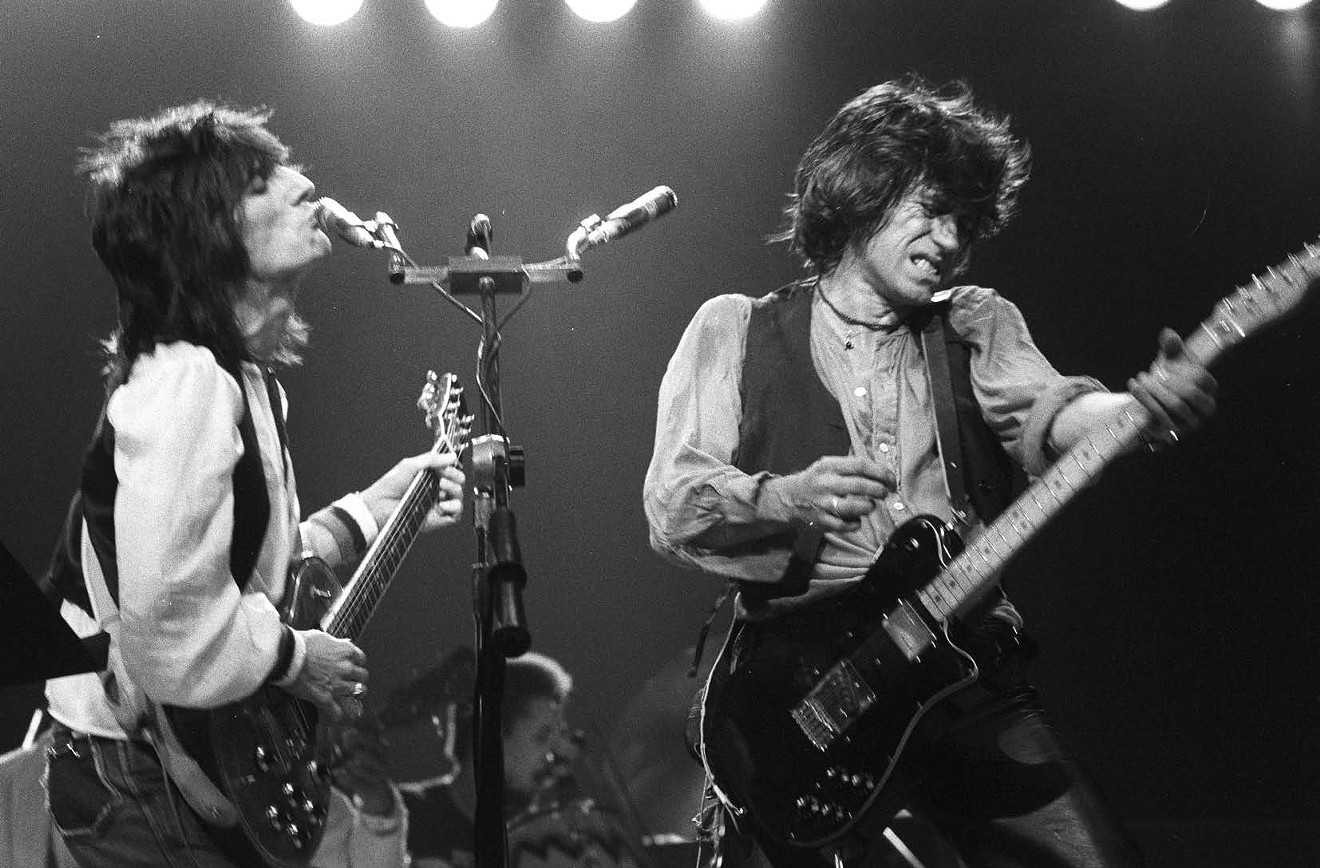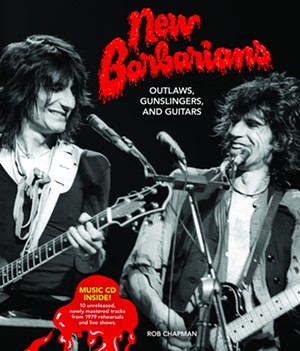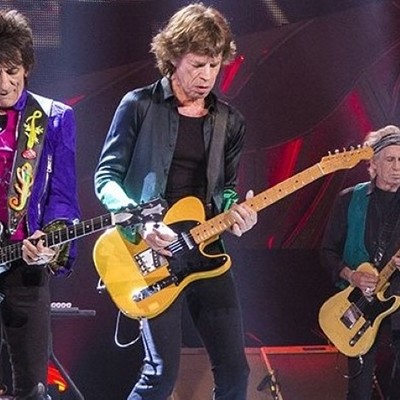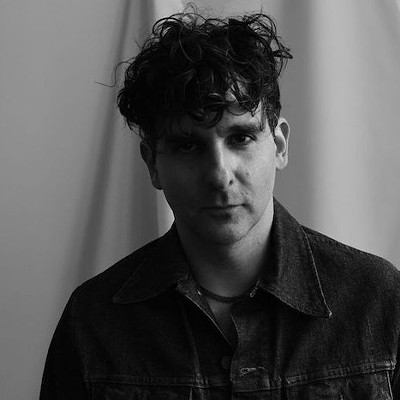By Rob Chapman
Voyageur Press, 200 pp., $40
Finally, a book on that great little band that featured Keith Richards and Ron Wood on guitars.
No, not that band that’s still going and features a 73-year-old great-grandfather (and new father) as front man, but the New Barbarians: the short-lived (very short-lived) ad hoc “supergroup” featuring those Stones axemen along with Small Faces/Faces keyboardist Ian McLagen, Meters drummer Jos
It was 1979 when Mick Jagger decreed that the Stones would not continue the Some Girls tour that year. Faced with a solo record to promote and a clear calendar, Wood began putting together a loose group whose rehearsals included jamming on Wood’s songs along with rock, country and R&B covers, and the occasional Stones tune. Neil Young inadvertently christened them the Barbarians; the “New” was added to distinguish them from the ’60s garage rockers (“Are You a Boy or a Girl?”).
Richards — who had barely escaped a prison sentence for a Canadian drug bust and was trying to kick heroin — in particular needed something to do, or to at least limit his partying to some sort of structure. And while Wood was ostensibly the “front man,” the loose structure of the band (and the shows) gave the impression of a
In April/May, the New Barbarians stormed across the country for an additional 18 shows, including a stop at the Summit on May 12; this book includes some backstage photos from the gig. According to Chapman’s description, a splendid time was had by all. Early in the tour the band was based out of Wisconsin's Playboy Club, which likely didn't make it too tough a time. Woody was ostensibly the front man but...well..let's just say that his vocals (at least as captured on the accompanying CD or loose, raw live takes) make his pal Keef's sound like Mick's in terms of quality comparison.
That’s despite the fact that rumors would run rampant at every stop that famous “friends” might be part of the band that night (it didn’t help that some promoters or venues may have billed it that way). So when, say, a Jagger, Bowie, Dylan or Page did not show up by show’s end, some audiences rioted.
The New Barbarians' lifespan was always supposed to be temporary, and after a summer appearance opening for Led Zeppelin at England’s Knebworth Festival and a lone early-1980 gig with half of the group, it was over. Live recordings (both official and bootleg) and video scraps have surfaced over the years, but the fully filmed last concert of the tour has disappeared. The band never made a studio record, though all of the members played on sessions for Ian McLagen’s 1979 solo debut, Troublemaker.
They were long viewed as simply an aberrant footnote in Rolling Stones history, but Chapman's handsome book does a wonderful job of telling the Barbarians’ story. It’s chock-full of rare live photos, memorabilia and ephemera, and seemingly done in participation with
BONUS
Light Come Shining: The Transformations of Bob Dylan
By Andrew McCarron
Oxford University Press, 232 pp., $19.95
Here’s an interesting addition to the sizable (and still growing) bookshelf on the recent Nobel Prize laureate, and one penned by a Ph.D. in social/personality psychology and not a music journo!
No normal run
Certainly sounds like the Bard of Hibbing. I
McCarron combines the historical facts of Dylan’s life at those times with direct quotes from interviews the Nobel winner has given over the years, and a lot of psychological/spiritual/Biblical analysis to “get into” the subject’s head at the time using academic and scientific approaches. The conclusions are a mixed bag, even for hardcore fans, but fascinating and inventive nonetheless.









